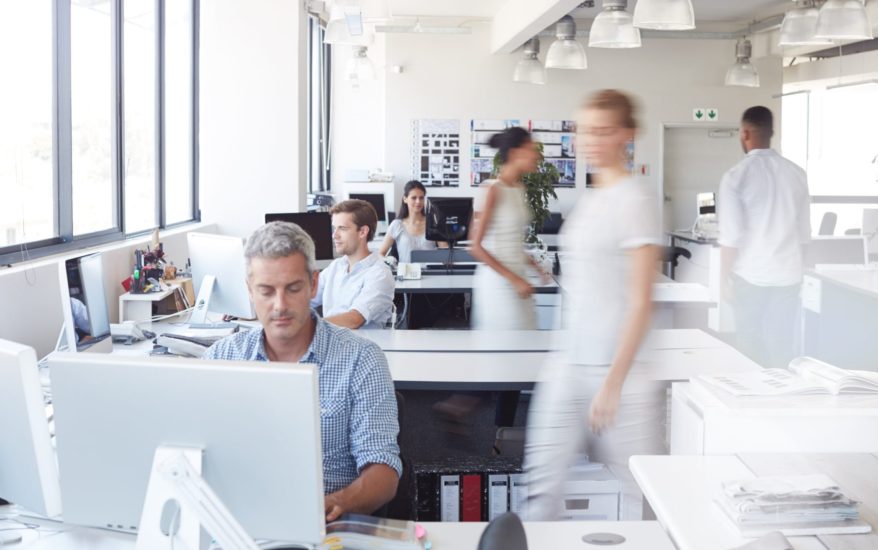
Employee mobility, project-based working, high real estate costs, new technologies and generational habits are all influential factors which are revamping the workplace. As a result, business leaders across industries have been forced to rethink their workspace management strategy to find new ways of achieving operational and cost efficiencies.
Creating a Collaborative Working Environment
 We have seen a shift towards more open office spaces which promote collaboration, teamwork and creativity. Static and fixed desks are beginning to disappear, paving the way for open spaces. New, innovative ways of working, such as desk sharing, tend to achieve this desired work environment. When implementing the principles of desk sharing, some companies can even end up with less desks than employees.
We have seen a shift towards more open office spaces which promote collaboration, teamwork and creativity. Static and fixed desks are beginning to disappear, paving the way for open spaces. New, innovative ways of working, such as desk sharing, tend to achieve this desired work environment. When implementing the principles of desk sharing, some companies can even end up with less desks than employees.
Desk sharing provides more flexibility for employees to choose their desk space. Desks are no longer dedicated to one person, filled with paperwork and personal momentums. Desk sharing encourages collaboration by breaking down barriers and siloed ways of working. Without ownership over a dedicated work space, employees are given the freedom to move around the workspace, promoting a culture of teamwork.
New Workplace, New Technology
Embracing new technologies helps businesses to ensure a smooth rotation of desk space. Using desk booking software, businesses can become more efficient in how they work their workspace. For example, adopting desk screen technology plays a big part in ensuring transparency around the use of the office workspace and in helping business to drive productivity. Workspace technology is becoming an important tool to help business navigate through these new working models and support them to make the most of employee desk space.
The millennial generation’s expectation of their working environment is shaping the future of office management. They want a social aspect to be integrated within their working day which promotes more mobility and collaboration between colleagues. With less desks, the interior design of the office space can be transformed to include break out spaces, allowing employees to move around the office to help them become more creative.



